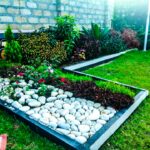The value of a well-designed kindergarten cannot be emphasized in the hectic environment of today. More than simply a place for kids to study, a practical and inspirational kindergarten room is a haven where young brains grow. The surroundings are very important for determining a child’s emotional development and path of education. The classroom interior design that emphasizes both beauty and utility will help to create an environment that supports innovation, safety, and a passion for learning.
Aesthetic Design’s Importance in Kindergartens
Since it affects children’s attitudes and conduct, aesthetic design in kindergarten is crucial. Lively and inviting surroundings are enhanced by bright colours, interesting themes, and kid-friendly furnishings. Children entering a well-designed classroom become eager and ready to explore. Their capacity to concentrate and engage in tasks may be much improved by this good emotional reaction.
Including natural light, plants, and outside views—all inspired by nature—can also help to relax you. Children who spend time in visually beautiful surroundings often appear to be happier and more driven, according to studies. Interior designers may make a kindergarten enchanting environment that inspires young students every day by carefully choosing colours, textures, and decorations.
A Major Component of Kindergarten Design: Functionality
Although appearance is very significant, in kindergarten design functioning is just as crucial. A well-considered design guarantees children’s safety and the practicality of use of the area. Appropriate storage options, adaptable furniture, and areas set out for activities abound in functional design. For young children especially, clutter-free and orderly surroundings are vital, and these components assist in preserving them.

Having easily available toys and learning resources, for example, motivates kids to help with clean-up, therefore fostering responsibility and independence. Adjustable tables and chairs among flexible furnishings let the area fit different activities, from group projects to individual assignments. Establishing separate areas for various activities—such as reading, painting, and play—also helps kids grasp the goals of every space and stay interested.
Safety First: Child Welfare Design
Designing kindergarten facilities calls for a priority on safety. From flooring to furniture, every piece has to be selected with the child’s safety first. Some of the key factors include rounded edges, non-toxic materials, and slip-resistant flooring. Furthermore, the design should provide simple teacher monitoring so that all the youngsters may be easily watched over.
Two other vital are enough ventilation and enough illumination. Natural light not only improves appearance but also promotes children’s growth and general well-being. Utilizing appropriate ventilation ensures adequate air quality, therefore lowering the risk of diseases and fostering a suitable learning environment.
To sum up, the value of practical and aesthetically pleasing kindergarten environments cannot be emphasized too often. Combining imagination with pragmatism can help classroom interior design produce not just aesthetically pleasing settings but also ones fit for learning and growth. Purchasing well-designed kindergarten buildings is an investment in the future as these surroundings significantly shape the brains and way of life of young children. Let’s welcome the ability of design to create motivating environments where kids can flourish and develop.
















